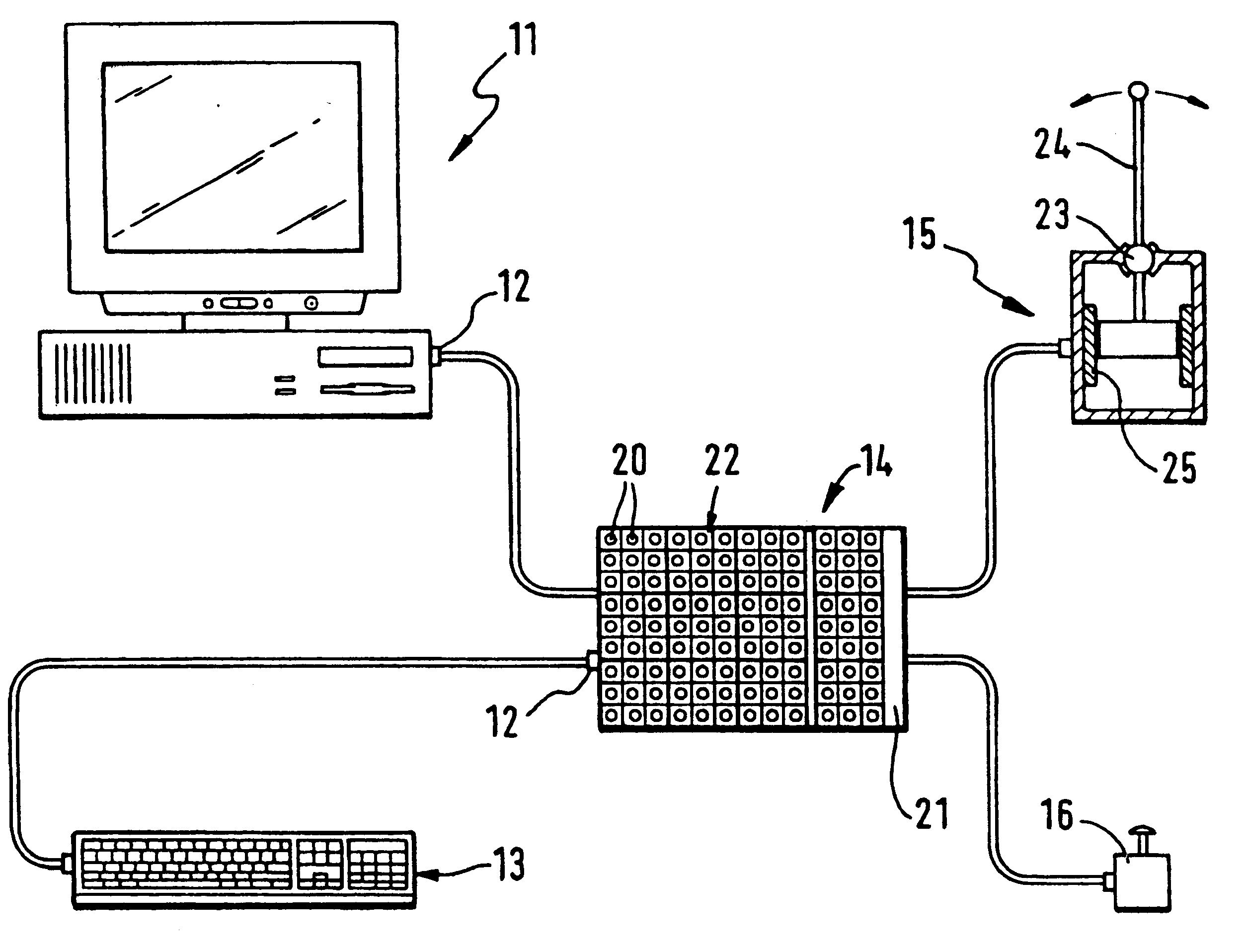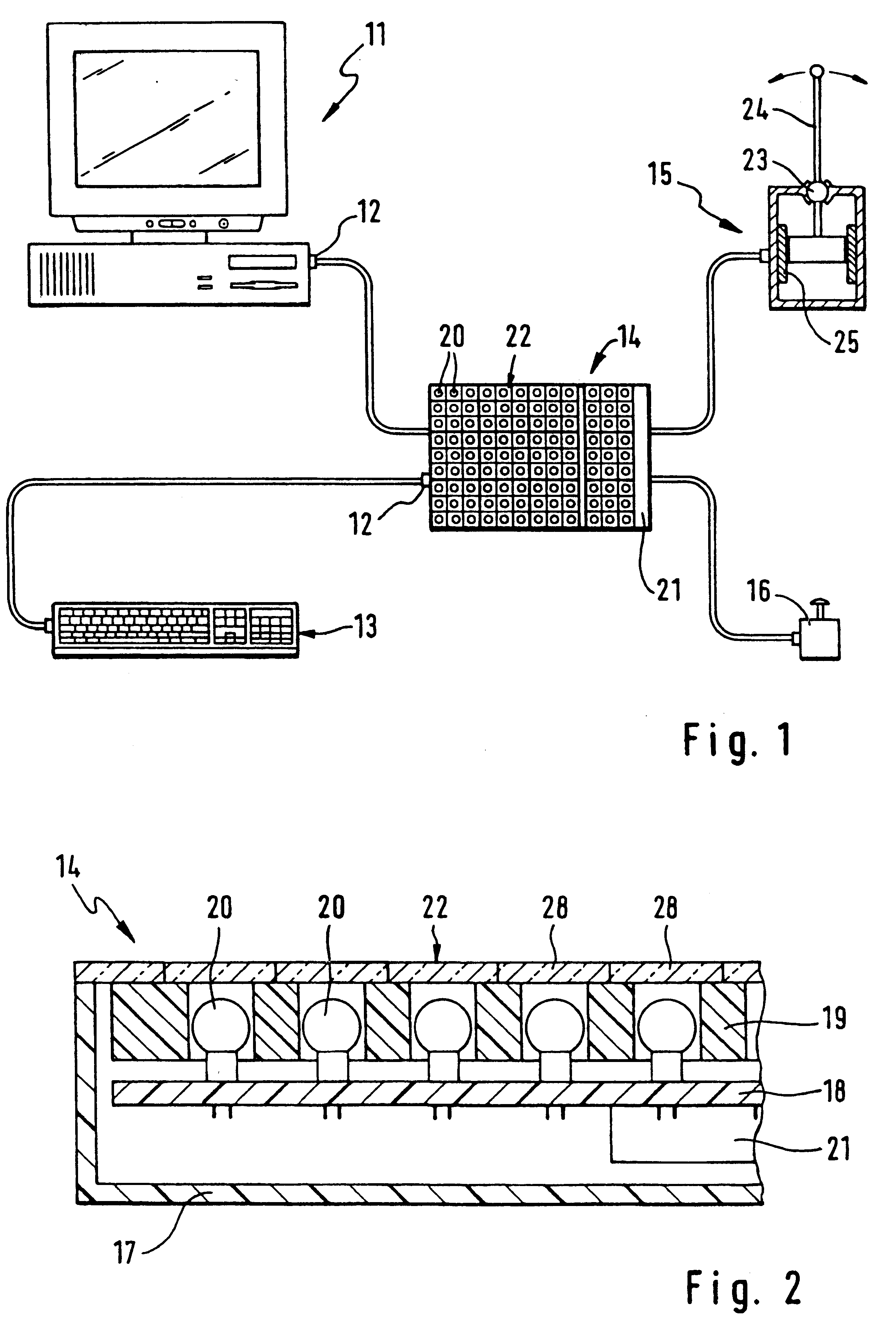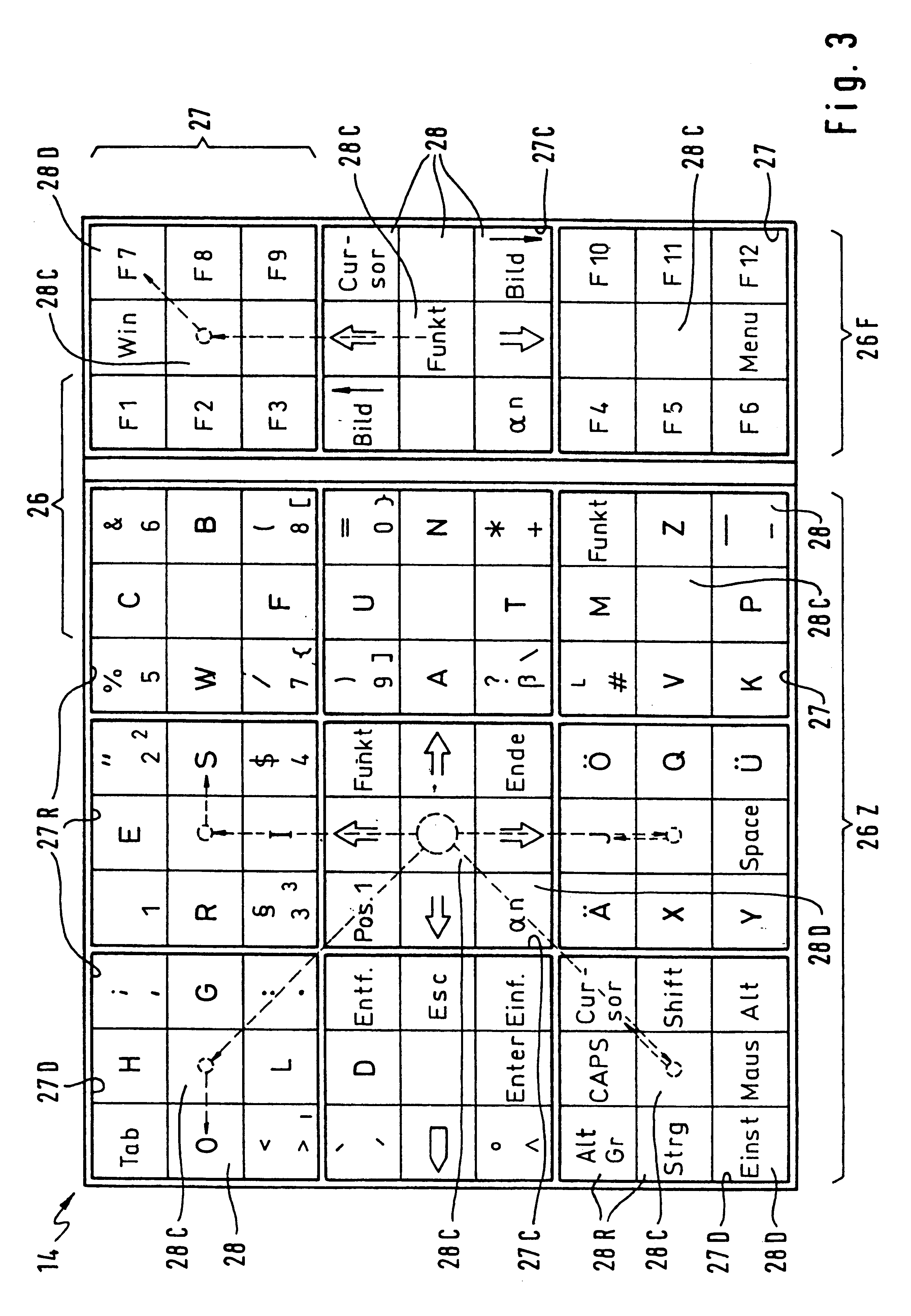Method for transferring characters especially to a computer and an input device which functions according to this method
a technology of character transfer and input device, applied in the field of character transfer, can solve the problems of inability to perform "blind" display, inability to perform "blind" selection, and therefore too much time, and achieve the effect of extremely simple manipulation
- Summary
- Abstract
- Description
- Claims
- Application Information
AI Technical Summary
Benefits of technology
Problems solved by technology
Method used
Image
Examples
Embodiment Construction
For manual input of alphanumeric character sequences (very general, including actuation of function keys), for example in a PC 11, there is connected in FIG. 1 at its keyboard inlet 12 a flat-constructed panel 14 according to the invention, instead of the usual keyboard 13, preferably not with an integrated but a separate positioning element 15 of the type of a joystick control device or the like. At least one additional push-button switch 16 may be integrated into the panel 14 or in the positioning element 15 or as illustrated, it may also be connected separately. A simultaneous connection of the traditional keyboard 13 to the computer is to a certain extent possible by looping through the panel 14.
The panel 14 consists of a flat housing 17, which surface area is preferably determined by the dimensions of the standard European PC card 18. On the card 18 (see FIG. 2) there is arranged within the housing 17 a grid consisting of miniature light bulbs (20), which are laterally shielded...
PUM
 Login to View More
Login to View More Abstract
Description
Claims
Application Information
 Login to View More
Login to View More - R&D
- Intellectual Property
- Life Sciences
- Materials
- Tech Scout
- Unparalleled Data Quality
- Higher Quality Content
- 60% Fewer Hallucinations
Browse by: Latest US Patents, China's latest patents, Technical Efficacy Thesaurus, Application Domain, Technology Topic, Popular Technical Reports.
© 2025 PatSnap. All rights reserved.Legal|Privacy policy|Modern Slavery Act Transparency Statement|Sitemap|About US| Contact US: help@patsnap.com



